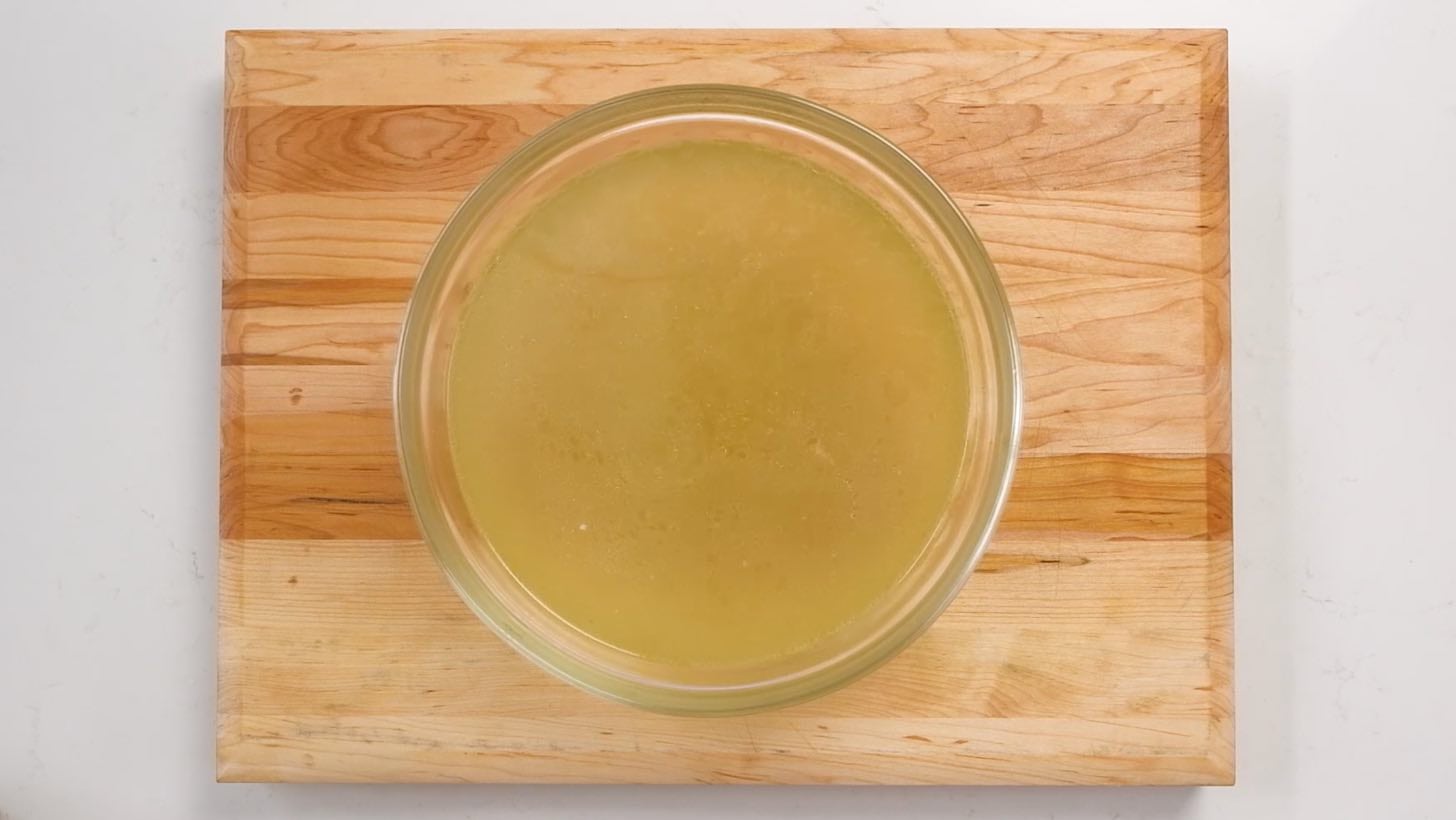
Are you a business ? Learn more about partnering with Innit.
Cooking Guide • Jul 23, 2019
Learn how to make it and learn the differences with this handy guide.
by Tyler Florence & Kira Akerstorm

Broth or stock? Well, when it comes to plain vegetable stock and broth, the difference varies from brand to brand. A rule of thumb would be that vegetable stock is more concentrated where vegetable broth is more diluted. You could consider stock as an ingredient and broth would be a final product. There’s a more significant difference between stock vs. broth when you throw a protein (like chicken or beef) into the equation, and let’s not forget about bone broth, which isn’t broth at all, but let’s talk about that later.
Stock’s flavor comes from vegetables and mostly bones, yielding to a richer mouthfeel and taste due to the collagen that dissolves into the stock when the bones break down. Stock is also cooked for a longer period of time than broth, to extract as much collagen as possible out of the bones. Fun fact: it’s the collagen that makes a stock gelatinous when refrigerated, and this is also an indicator of quality is stock - if it doesn’t gel, then you’ve been tricked. Lastly, it’s very common to roast the ingredients before cooking them. This will result in an even more flavorful stock.
Broth, on the other hand, is made out of vegetables and the meatier parts of an animal. It’s lighter in both taste and viscosity. Use the more subtle broth as a base for soups, or you can even cook vegetables, pasta, and rice in broth to add more flavor. You can also enjoy broth as is.
Last but not least, there’s bone broth. Yes, these are often referred to as broths, but they’re in fact prepared like stocks and cooked for up to 24 hours. Then why are they called broths? Unfortunately, we don’t have an answer for you, but we suspect because they’re encouraged to be enjoyed like broths.
Stock and broth are interchangeable in most recipes; it mostly depends on your personal preference.
Now that we’ve covered that let’s move into the making of chicken broth. Be sure to read the tips below to make the best possible broth. Homemade chicken broth is a little time consuming to make, but definitely worth it. We promise that you won’t go back to buying store bought again.

What vegetables to use? The classic vegetable combination to use are carrots, onions, and celery, aka the holy trinity (in the culinary world this is called “mirepoix”). You can also choose to use other root vegetables such as parsnips and celeriac. Keep in mind, that these will contribute to a more aromatic broth. Fennel, on the other hand, gives off a sweet, subtle, aromatic taste. If you need more depth in your broth or stock, try adding a few dried shiitake mushrooms or a piece of dried kelp; these give out a great umami (aka meaty and savory) flavor.
What vegetables not to use? We wouldn’t recommend using any vegetables from the Brassica plant family (think cauliflower, broccoli, bok choy, kale, turnips..). They have a very pungent flavor and can also add unwanted bitterness to the stock. Cucumbers, bell peppers, eggplants, beetroots, peas, are vegetables that you might want to keep out of the equation as well. Potatoes aren’t ideal either, unless you want to add more body to your broth (potatoes contain a lot of starch).
To peel or not to peel? It’s up to you if you choose to peel your vegetables. Unpeeled vegetables will result in a more earthy taste, and the broth won’t be as bright. Also, if left unpeeled, make sure to scrub your vegetables well to avoid any dirt getting into your broth. You can also consider collecting veggie scraps (think wilted herbs, carrot and onion peel) into a freezer bag, which you store in the freezer, and use the contents of that the next time you whip up a broth or stock.
Herbs and spices? You don’t necessarily need to add any herbs or spices to your broth. But you absolutely can if you want, and we encourage you to do so. Bay leaf, thyme, and parsley are classics, but you can also add some more unconventional ones like cilantro, lemongrass, ginger, or star anise. These work exceptionally well if you’re making noodle soup.
Salt or no salt? If making a broth, then treat it like any other meal - seasoning as you go. If you are making stock, we recommend skipping the salt as stocks are typically ingredients for other recipes and starting with a salty stock could be disastrous.
Roasted chicken for dinner? Instead of buying a whole raw chicken to make broth out of, use the carcass of your roasted chicken to prepare stock. Toss the carcass in a pot with water and aromatics and let simmer away as you would with a whole chicken (see recipe below). Also, if you just made our delicious butterflied chicken then toss in the spine as well, to make an even more delicious stock.
2-3 hrs
total time
15 min
active time
4-5 quarts
yield


Wash 4 stalks celery and 2 carrots. Cut celery and carrots into chunks on the bias. Peel 1 onion and cut into large chunks. Set the vegetables aside along with 2 peeled garlic cloves and 2 bay leaves.


Pour 6 quarts water into a large pot (slow cooker or a pressure cooker would work as well. Just make sure to follow the instructions for your appliance), and add all the prepared vegetables and aromatics. Add 1 whole chicken and 1.5 Tbsp. salt. Bring to a boil, then let simmer on low, uncovered, for 2-3 hours. Skim off and discard the foam that builds up on the surface.


Fish out the chicken with a spider strainer, tongs, or anything else that you can safely lift out the chicken with, and lay the chicken on a cutting board to cool. Strain the broth into a large bowl, discard vegetables (waste not, want not; puree these into a soup). Let the broth cool, and refrigerate. Once refrigerated, the fat will rise to the surface which you can skim off and discard if desired.
Tip! You can portion out the broth into freezer bags, or mason jars, and store in the freezer.


Once the chicken is cool to touch, discard skin and bones. Shred the chicken with the help of two forks and heat up with the broth to make soup or, for example, use it in salads, pastas or casseroles. You can also freeze the cooked meat up to 6 months.